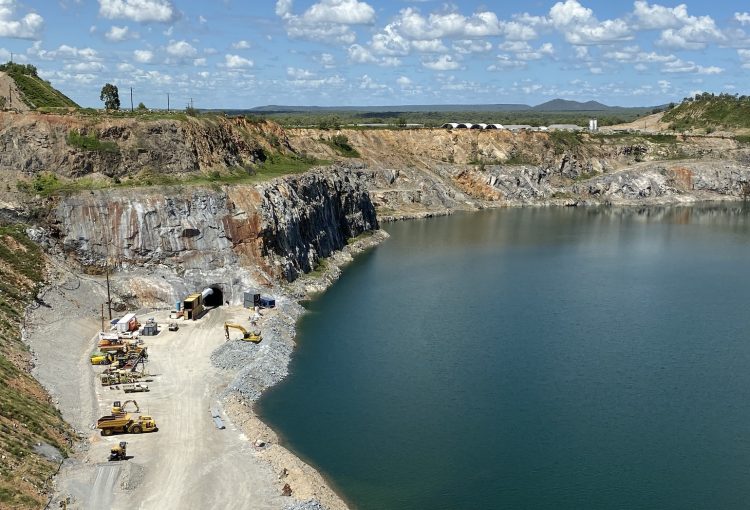Two site engineers on the Kidston Pumped Storage Hydro Project in Far North Queensland share their experience working on a world-first project that will drive renewable energy.
Construction firm McConnell Dowell, in a joint venture with John Holland, are constructing the Kidston Pumped Storage Hydro Project (K2-Hydro). It is the first in the world to repurpose and utilise an abandoned gold mine, and once completed, it will become the third largest electricity facility in the country.
It will create 900 direct jobs and will help Queensland achieve its renewable energy target of 50 per cent by 2030.
“I’ve never been involved in anything like it, particularly the sustainability side,” site engineer Ashlee Othen tells create. “Every aspect that we look at has a sustainability focus. It’s world-class engineering.”
For fellow site engineer Jean-Luc Lejeune, the opportunity to work on a project that will play a critical role in the transition to renewable energy is one that hits close to home.
“My partner’s family lives off-grid and on a farm, so they’re interested in pumped storage hydro. They’re finding they need more energy because their solar is not cutting it when it rains,” he says. “They’re trying to mimic it, but I don’t think they have the scale to create the net renewable energy.”
It is the scale of the project and the remarkable feat of engineering that makes K2-Hydro the perfect power generation facility and natural battery storage. In fact, the site will be able to generate 250 MW for eight hours, or 2000 MWh in total – that’s enough to power 100,000 households. When it’s not being used, water will be pumped to the upper reservoir using surplus off-peak electric power.
“This excess energy is used to reverse the turbines and pump the water from the bottom reservoir to the upper reservoir, essentially creating a big battery,” says Lejeune.
“Before this, I was working on the new parallel runway in Brisbane. When I land on that runway it’s a pretty cool feeling because I helped build it. I guess this [K2-hydro] is a bit different but I’ll still get the sense of achievement when I turn on a light in Far North Queensland.”
Engineering in the outback
As expected, the conversion of two existing mine pits into dams in the remote Queensland outback isn’t simple. It involves significant underground infrastructure, including waterway shafts and tunnels to allow the transfer of water between the upper and lower reservoir, and a large powerhouse cavern.
“This cavern is 45 metres high, roughly 22 metres wide, and roughly 86 metres long. It’s not every day you get to excavate something like that,” says Lejeune.
“We are out here in the middle of nowhere, we started from scratch. And yes, you can dig a hole, but in order to dig a hole, you’ve got to have so many pre-requisites ticked. Explosive licences, security clearances, subcontractors engaged, plant purchased and operators on-boarded, for example. This is what the team all works together to achieve and engineers play a big part in it.”
Othen, who has been with McConnell Dowell for four years and moved to Kidston mid-March, is a part of the team responsible for the day to operations of the K2-Hydro project above ground. From overseeing presink piling work to planning to ordering concrete and quality control, Othen ensures the site is operating as it should be. But similar to Lejeune, she admits working on a site four and half hours from a large town isn’t without its challenges.
“Because of the remoteness, getting deliveries and labour here is a challenge. When you’re working on a sustainability project you don’t want to bring in a product that doesn’t align with what you’re looking for. At all stages of the supply chain, we are looking for sustainable options.”
Community impact
According to Lejeune, having an infrastructure project as big as K2-Hydro operating in Far North Queensland is having a real positive impact on the community.
“I can see first-hand how being out here affects the community. It’s not a big place. But locally, it’s transformed everyone here and then further afield.”
Othen agrees.
“Kidston is really small, around five or so houses. But the majority of the residents are employed on the project now … they love it. We see them every day walking around with smiling faces. I think they really enjoy that we’re here. And we enjoy them as well, understanding the local side of things, making sure they’re happy.”
“That’s what’s so rewarding about these big projects, you feel like you’re part of something bigger,” says Lejeune.
Interested in more innovative engineering stories making an impact on the world? Sign-up to create’s weekly newsletter.
